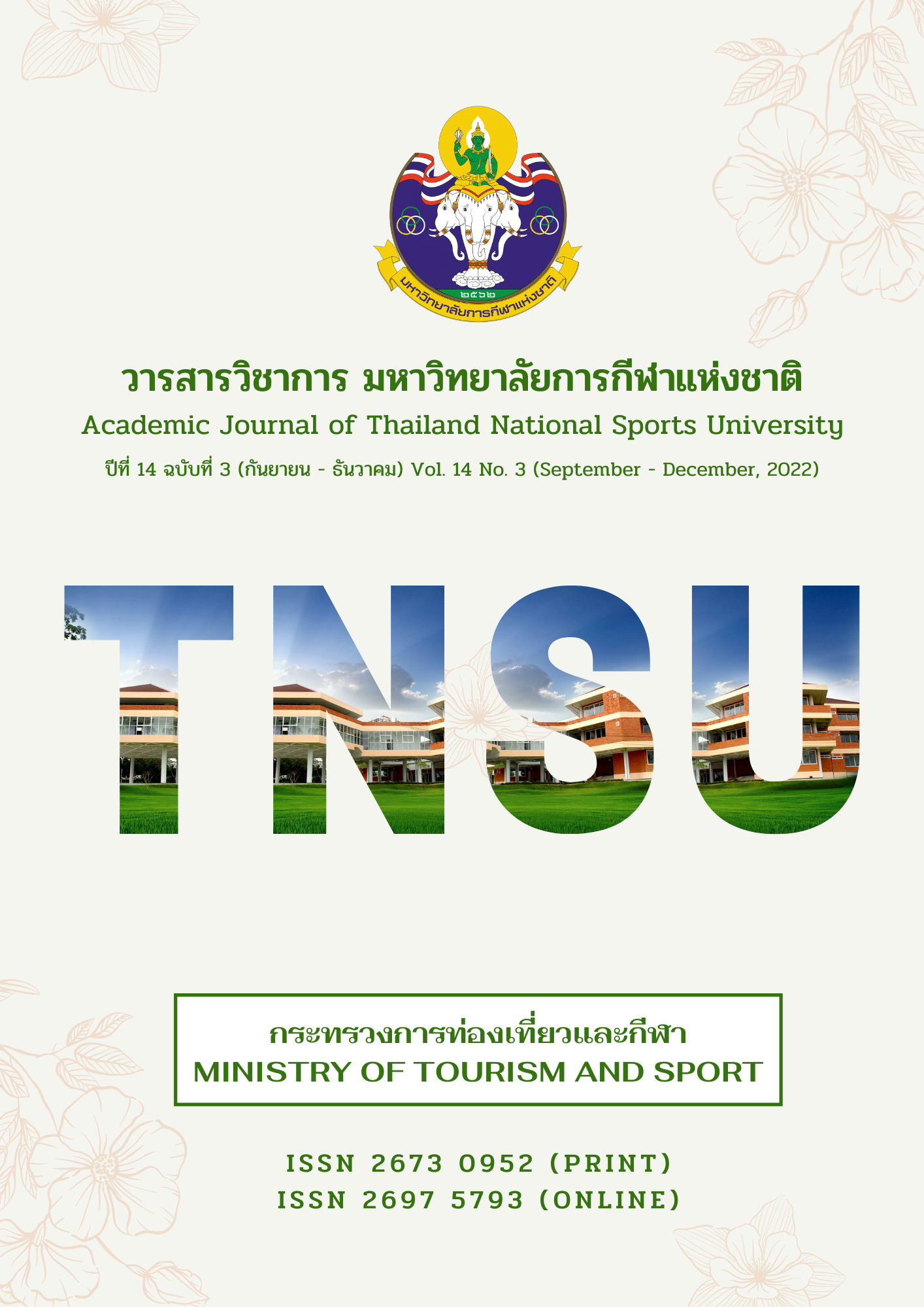MEDIA EXPOSURE, PERCEPTION, KNOWLEDGE, AND BEHAVIORS IN HEALTH PROTECTION ON PANDEMIC FOR JUNIOR HIGH SCHOOL STUDENTS: CASE OF COVID-19
Main Article Content
Abstract
This research was a cross - sectional analytical study with the objective of studying media exposure, perception, knowledge and behaviors in health protection on the pandemic for junior high school students: case of COVID - 19. The samples were 540 junior high school students from 10 schools in Thailand, obtained by multi -stage sampling. The tool used was online questionnaires. The data were analyzed using Pearson’s Correlation Coefficient statistics. The results of the research were as follows: The samples had media exposure, perception of information, knowledge regarding COVID - 19 and behaviors in health protection on the pandemic of the COVID - 19 ranged from medium to high levels. Social media such as Facebook, Line, Twitter, etc. were the most exposed sources of information. The issues which provide the most perception of information were watching, listening, talking, reading or researching the situation of the COVID - 19 outbreak in Thailand. The subjects which provide the most information were the symptoms and treatments of COVID - 19 and the most appropriate behaviors in health protection during pandemic: Case COVID - 19 was the behavior of wearing mask. Furthermore, it was found that media exposure, perception of information and knowledge regarding COVID - 19 was positively correlated with behaviors in health protection on COVID-19 (r = 0.58, 0.61 and 0.20 respectively). The study result showed that media exposure, perception and knowledge regarding COVID - 19 are factors that affect behaviors in health protection during the pandemic for junior high school students in COVID - 19 situation.
Article Details

This work is licensed under a Creative Commons Attribution-NonCommercial-NoDerivatives 4.0 International License.
The published article is a copyright of the Academic Journal of Thailand National Sports University. The passage appeared in each article in this academic journal is a perspective of each author which is not related to the journal. Each author is required to be responsible for all components of his/her own article. If there are any mistakes, each author must be responsible for those mistakes on his/her own.
References
Bureau of Information, Office of the Permanent Secretary. (2020). Ministry of Public Health reveals results of self-defense behavior from COVID-19. Retrieved from https://pr.moph.go.th/?url=pr/detail/2/04/144015/
Bureau of Risk Communication and Health Behavior Promotion, Department of Diseases Control. (2015). Perception of Thai citizens’ toward Ebola Virus Disease (EVD) in 2015. Bangkok: Danex intercorporation.
Department of Diseases Control, Ministry of Public Health. (2021). COVID-19 situation report. Retrieved from https://covid19.ddc.moph.go.th/
Faul, F., Erdfelder, E., Buchner, A., & Lang, A. G. (2009). Statistical power analyses using G*Power 3.1: Tests for correlation and regression analyses. Behavior Research Methods, 41(4), 1149 - 1160. doi:10.3758/BRM.41.4.1149
Hawkins, D. I., & Mothersbaugh, D. L. (2010). Consumer behavior: Building marketing strategy (11th ed.). New York: McGraw - Hill/Irwin.
Hunt, T., & Ruben, B. D. (1993). Mass communication: Producers and consumers. New York: HarperCollins College.
Jiraporn Tangkittipaporn. (2013). General Psychology. Bangkok: Chulalongkorn University Press.
Klapper, J. T. (1967). Discussion in L. Thayer (Ed.), Communication: Concepts and perspectives. Washington, D. C: Spartan Books.
Li, X. (2018). Media exposure, perceived efficacy, and protective behaviors in a public health emergency. International Journal of Communication, 12, 2641 – 2660.
Narayana, G., Pradeepkumar, B., Ramaiah, J. D., Jayasree, T., Yadav D. l., Kumar, B. K. (2020). Knowledge, perception, and practices towards COVID-19 pandemic among general public of India: A cross - sectional online survey. Current Medicine Research and Practice, 10, 153 - 159. doi: 10.1016/j.cmrp.2020.07.013
National Health Development Plan Steering Committee, Ministry of public health. (2016). 12th national health development plan (2017-2021). Retrieved from http://wops.moph. go.th/ops/oic/data/201 80914162453_1_.pdf
Niranta Sriboonthip, Chakkrit Ponrachom, Prawech Chumkesornkolkit, & Adun Chayyaphong. (2018). Media exposure, perception, knowledge and behaviors protecting diseases and health hazard of Thai citizens in 2018. Academic Journal of Thailand National Sports University, 12(3), 44 - 57.
Nuntanut Somnarin & Natchuda Wijitjammaree. (2020). Information exposure, knowledge, attitude and practice in prevention of dengue hemorrhagic fever of people in Nonthaburi province. The 9th national Kasetsart University Kamphaeng Saen Conference. Retrieved from http://esd.kps.ku.ac.th/kuk-conference/img/gallery/article_9/pdf/o_human43.pdf
Schiffman, L. G. & Kanuk, L. L. (2000). Consumer Behavior (7th ed.). New Jersey: Prentice Hall.
Sudham Rattanachot. (2009). Organizational behavior and management. Bangkok: Top Publishing.
Surapongse Sotanasathien. (2016). Theory of Communication (3rd ed.). Bangkok: Rabiangthong Printing House.
Sutapat Pradubkaew, Jintana Sarayutpitak, & Thanomwong Kritpet. (2020). Behavior modification program to prevent diabetes and hypertension of the staff at risk in higher education institution. Academic Journal of Thailand National Sports University, 12(2), 269 - 281.
Wang, D., Ma, A., Ghimire, P., Wang, N., Zhu, S., Li, Q. and Guo, S. (2020). Association of knowledge, attitude and practice of covid-19 prevention with anxiety among residents of Henan Province, China. Journal of Health Science and Alternative Medicine, 2(2), 9 - 16.
World Health Organization. (2021). WHO Coronavirus Disease (COVID-19) Dashboard. Retrieved from https://covid19.who.int/
Yong Poovorawan & Yuen Poovorawan. (2020). COVID-19 and epidemiology: online lessons for students and the public by Kasetsart University with support from Thai media fund. Retrieved from https://learningcovid.ku.ac.th/


